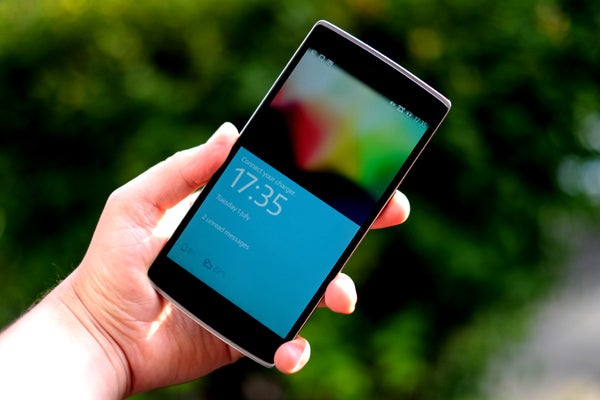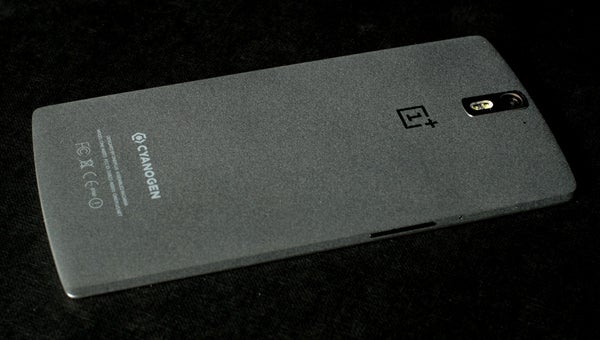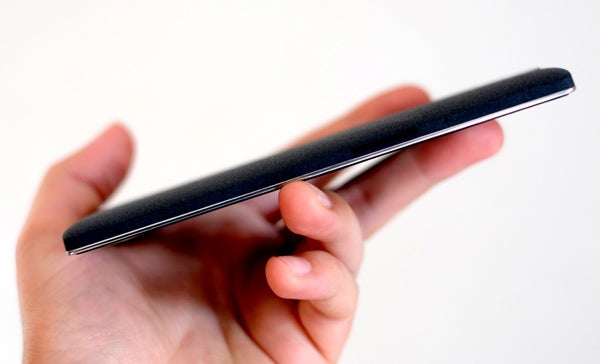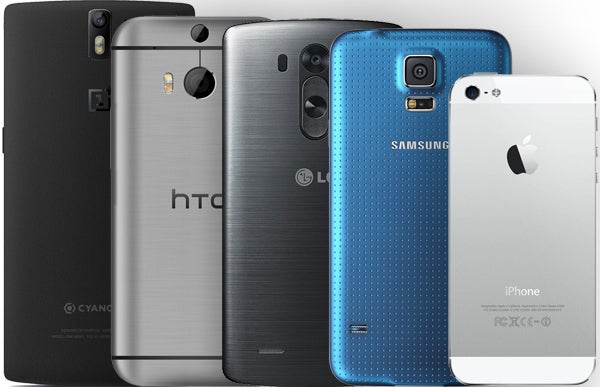OnePlus One Review
OnePlus One
The cheapest true high-end phone you can buy

Sections
- Page 1 OnePlus One Review
- Page 2 Screen Review
- Page 3 Android, CyanogenMod and Performance Review
- Page 4 Camera Review
- Page 5 Battery Life, Sound Quality and Verdict Review
Verdict
Pros
- Superb value
- Plenty of power
- Large, high-quality screen
Cons
- Patchy 4G support in UK
- Too-quiet call speaker
Key Specifications
- Review Price: £229.00
- 5.5-inch 1080p IPS LCD screen
- Snapdragon 801 2.5GHz CPU
- 3GB RAM
- Android 4.4.2 with CyanogenMod
Originally reviewed on 3 July 2014 – read the latest on its successor the OnePlus 3
What is the OnePlus One?
When the OnePlus One was first announced we were sceptical. How can a phone priced at £229/$350 really compete with the might of Samsung in the high-end phone arena? There was a lot of hype around it, in fact the OnePlus One is the most hyped phone from an unknown manufacturer ever. It wasn’t that long ago that OnePlus didn’t even exist as a company.
The good news is that you can have your cake and eat it. The OnePlus is a proper high-end smartphone that comes at a fraction of the price of the competition. Of course it’s not perfect, no phone is, but it’s hard to find another phone that offered as much bang-for-buck as the OnePlus One when it first launched. It’s been out for over a year now though, and the price of it’s key competitors – the Samsung Galaxy S5 and LG G3 – have tumbled.
So is it still worth getting? The answer isn’t the resounding yes it was last year. You can now get the similarly specced LG G3 for just a little more – and that won TrustedReviews Phone of the Year in 2014. You also need to consider the fact that it isn’t compatible with some 4G networks in the UK. That makes it an instant no-go for many of you.
With those caveats in place, let’s take a closer look…
SEE ALSO: Best Phablets 2015

OnePlus One – Design
The OnePlus One is actually significantly larger than some of the phones it’s designed to compete with, like the Galaxy S6 and HTC One M9. That’s because the phone has a 5.5-inch screen – just like the iPhone 6 Plus that costs three times as much. We imagine OnePlus takes no small amount of glee in offering such a large screen at half the price of its 5-inch competitors.
Consequently, though, the OnePlus One does take a bit more getting used to than those phones. But it is way off the ridiculous size of supersize phones like the Nexus 6 and HTC One Max. You can still use it in one hand. It’s just big.
One other way the OnePlus One manages to have a style all of its own is by using a very unusual rear finish. We used the black 64GB version and it has an oddly, deliberately rough soft-touch finish. It’s like a cross between sandpaper and felt. That may sound terrible, but it’s very tactile surface that makes the phone feel that bit more substantial than a lot of other phones, including the Samsung Galaxy S5. It almost feels like it’s made of stone.
SEE ALSO: OnePlus One vs Oppo Find 7a

The OnePlus One also comes in white, but only in its lesser 16GB storage edition. OnePlus plans to offer other back covers made of different materials, but don’t hold your breath about these being easily available in the UK.
The back of the phone is removable, but it’s not designed to be removed frequently, there’s no hidden memory card slot and the battery is locked in place. You need a tool to get the back off too – it’s just there to let people customise the phone if they really want to.
OnePlus is a Chinese company and China is famous for its phones that ‘borrow’ the designs of other better-known phones. But the OnePlus One successfully creates its own look and feel, and one that compares fairly well with all the other top-end phones we have here in the UK.
SEE ALSO: OnePlus One Problems: Is it too good to be true?

The design is deliberately simple, too. A micro-SIM tray sits near-invisibly on the phone’s side, and as the volume and power buttons are a similar colour to the OnePlus One’s back, they’re effectively hidden when viewed from any distance. Even the OnePlus logo is remarkably small – especially given that building a brand is OnePlus’s number one priority at this point in its sub 1-year existence.
Clear design thought has gone into the OnePlus One. It’s not as stunning as the HTC One M8, but for a first effort from a small company, it’s quite the achievement.
OnePlus One – Dimensions
This picture tells you a little more about quite how bit the OnePlus is. While the LG G3 has the same size screen, the OnePlus One is still significntly bigger as it doesn’t have the super-slim screen surround of LG’s latest.
The OneOlus One is 153mm tall, 76mm wide and 8.9mm thick. It is thin, but has a substantial footprint. Weight is no real issue, though.
As its core is made of lightweight magnesium, the OnePlus One weighs 162g. That’s a very similar weight to the smaller HTC One M8.
SEE ALSO: Best Android Phone Round-up
OnePlus One – Connectivity
The hardware is a success story as long as you can handle that extra size. But there’s a serious problem under the hood of the OnePlus One, and we think it is the number one problem with the phone.
What is the issue? 4G. The phone supports the 700, 1700, 2600, 2300, 2100 and 1800MHz bands. If this means nothing to you, don’t worry – it’s not what’s there that matters.
The problem is that there’s one missing band that’s extremely important in the UK – 800Mhz, also known as band 20. Several networks here use this band, and as the OnePlus One doesn’t support it, you can’t get 4G on O2, Vodafone, GiffGaff, Tesco or Lycamobile. Three also relies on the 800MHz band for some of its 4G, so 4G signal on that network in certain areas may not be too hot.
That only leaves EE and Three, which use the 1800MHz band that’s compatible with the OnePlus One. If you’re on one of those networks, you’re good to go (4G).
SEE ALSO: Best Mobile Phones 2015

This is a serious issue, and is the best reason to leave this phone on the shelf. Why has OnePlus left such an important band out? Because it’s not really an important band in other key territories.
An official statement on the OnePlus forums suggests the band was left out as it is only used to supply rural areas of the UK and other countries with 4G. Last time we checked, London wasn’t all that rural. Still, let’s not forget this is OnePlus’s first go at a phone.
The one other missing connectivity bit is an IR blaster, which lets you use a phone as a universal remote for your TV, Blu-ray player and so on. Over the past couple of years we’ve mellowed from thinking this is pointless to kind-of useful, but we’re yet to meet many people who have the feature and actually use it.
All the other high-end bells and whistles are here. NFC, ac-grade Wi-Fi and Cat4 4G are all in place in the One.
How we test phones
We test every mobile phone we review thoroughly. We use industry standard tests to compare features properly and we use the phone as our main device over the review period. We’ll always tell you what we find and we never, ever, accept money to review a product.



